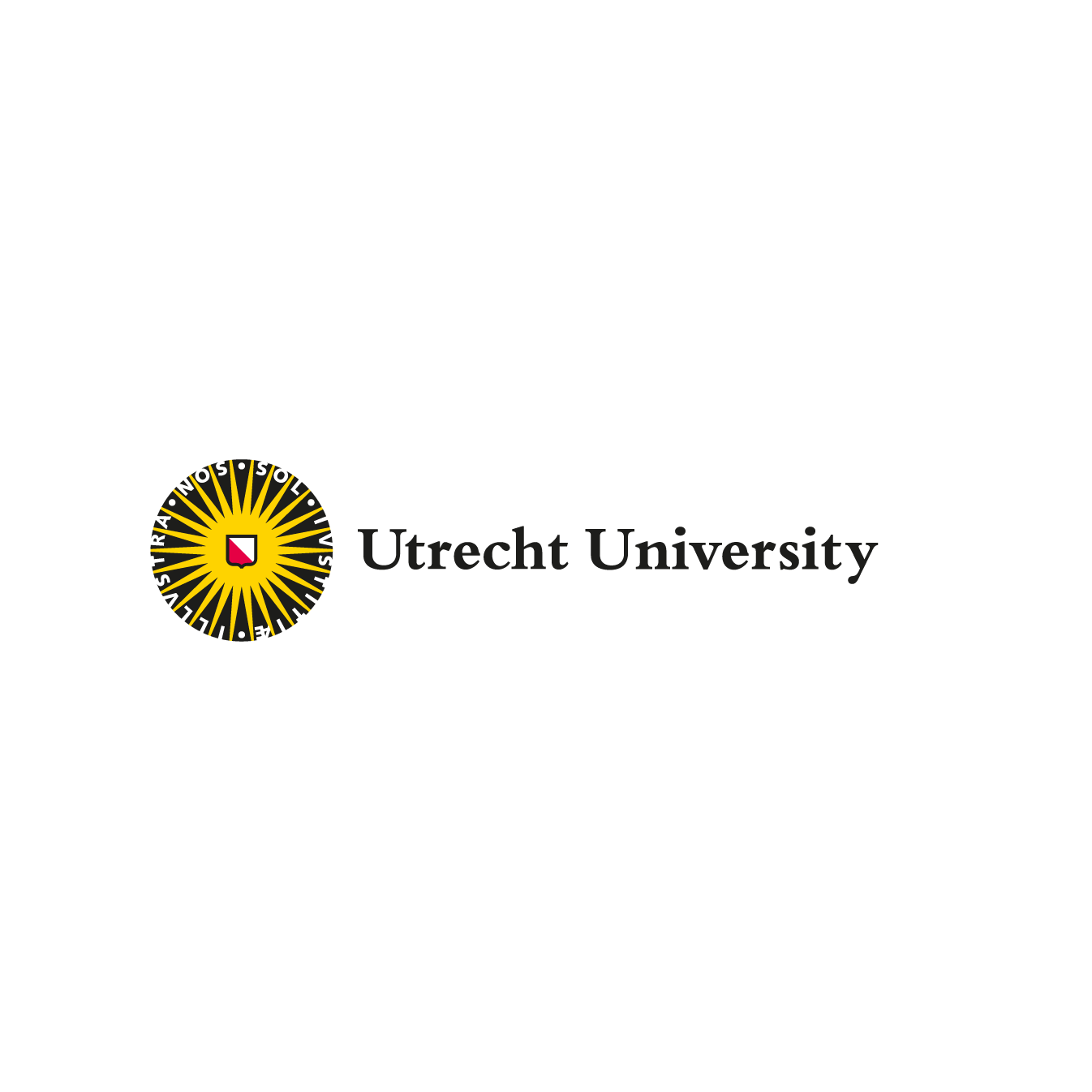Here follows an invitation to the history of the role of ecology in Dutch water management. We present the Marker Wadden project as an icon because it represents the paradigm and mind shift: towards building with and, eventually, for nature. To exemplify this process, we sketch the history of the Marker Wadden, an engineered island aimed to restore biodiversity in the Markermeer.
Here follows an invitation to the history of the role of ecology in Dutch water management. We present the Marker Wadden project as an icon because it represents the paradigm and mind shift: towards building with and, eventually, for nature. To exemplify this process, we sketch the history of the Marker Wadden, an engineered island aimed to restore biodiversity in the Markermeer.
Here follows an invitation to the history of the role of ecology in Dutch water management. We present the Marker Wadden project as an icon because it represents the paradigm and mind shift: towards building with and, eventually, for nature. To exemplify this process, we sketch the history of the Marker Wadden, an engineered island aimed to restore biodiversity in the Markermeer.
“Do you have protection?” - the question that mattered the most.
According to Disco (2000) the consideration of the role of nature in Dutch water management dates back to the ‘Oosterschelde crisis’ in the 1970s. Before this crisis, water was considered as the ‘enemy’. Rijkswaterstaat, the governmental water engineering institute, was fighting ‘the battle against water’ for the Netherlands. Water engineering constructions such as the Afsluitdijk in 1932 and the Haringvlietdam in the 1960s were built, knowing they would have enormous consequences for the ecosystems in which these constructions were placed. Guaranteeing safety and sustaining economic benefits especially became a priority after the big flood of North-Holland in 1916 and the North Sea flood of 1953. These events led to ecological welfare being ruled out as an agenda point in water management.

Map of the Deltawerken
A shift in minds and paradigms
In the 1970s environmental protests against major water engineering constructions started. These protests were targeted against the construction plans of the Oosterscheldedam (OD). This dam was the last dam constructed of the Deltawerken by Rijkswaterstaat. After the 1973 elections, however, the newly formed centre-left coalition decided to cancel the plan for the OD due to environmental concerns. As a concession, a decision was made for a storm surge barrier, merging environmental and safety concerns. After the ‘Oosterschelde crisis’, drs. H.L.F. Saeijs became the first biologist at Rijkswaterstaat. His position enabled many other biologists to work at Rijkswaterstaat, challenging the dominant engineering perspective of the institute (Disco, 2000).
Towards building in, with, and for nature
Over time, ecology was embedded more and more in Dutch water management. Two noteworthy events shaped this change: First, the introduction of integral water management in the 1980s (Ministerie Verkeer en Waterstaat, 1989) in which drs. H.L.F. Saeijs played an important part (Disco, 2000). Second, a different approach to water management in 2000, giving more room to water to adjust to the challenge's climate change brought upon us (Ministerie van Verkeer en Waterstaat, 2000). In 1999, drs. H.L.F. Saeijs - way ahead of his time - argued that the future paradigm in Dutch water management should be ‘eco-pragmatism’ which places (water) ecosystems at the centre of water management.
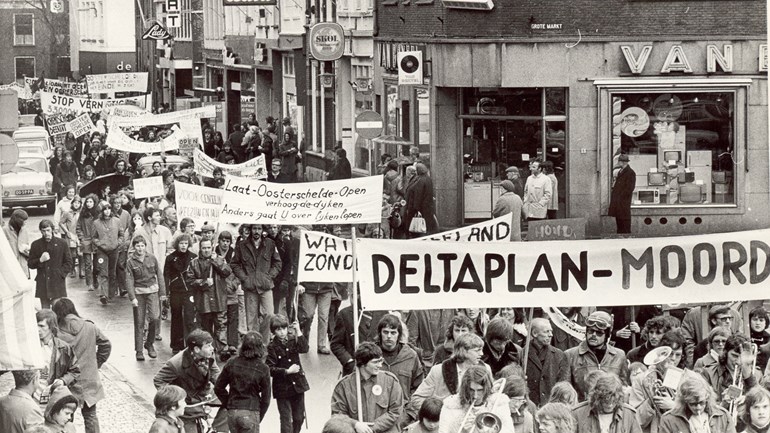
Protests against the Oosterscheldedam which is part of the Deltawerken

A quite dramatic picture of Saeijs

The Deltawerken
An unexpected party
The first time nature was the primary consideration with a water engineering project was the ecological restoration of the Markermeer in 2012. This was the Marker Wadden project, a primary nature-based large-scale water engineering project introduced by Natuurmonumenten (2012). Restoring ecological quality in the Markermeer was vital since it had been degrading after the construction of the Houtribdijk in 1976. Indeed, the Markermeer is of enormous international importance for waterfowl and migratory birds. Due to the placement of the Houtribdijk, however, the ecological system of the Markermeer was closed off with all non-natural banks and connections to other water systems. This resulted in cloudiness of the lake due to sludge and led to the degradation of its ecological quality and biodiversity.
In an uncommon move, Natuurmonumenten, a nature conservation organisation, initiated this project and thereby encroached on foreign spheres of influence. Because Rijkswaterstaat is responsible for all waters in the Netherlands, Rijkswaterstaat and Natuurmonumenten jointly managed the project. As such, the Marker Wadden project can be considered to be the form of eco-pragmatism that drs. H.L.F. Saeijs envisioned for the future. The quality improvement of the ecosystem of the Markermeer was the main objective. Additionally, secondary objectives such as recreation, innovation and the promotion of the project as an international showcase also played a part (Natuurmonumenten, 2012).
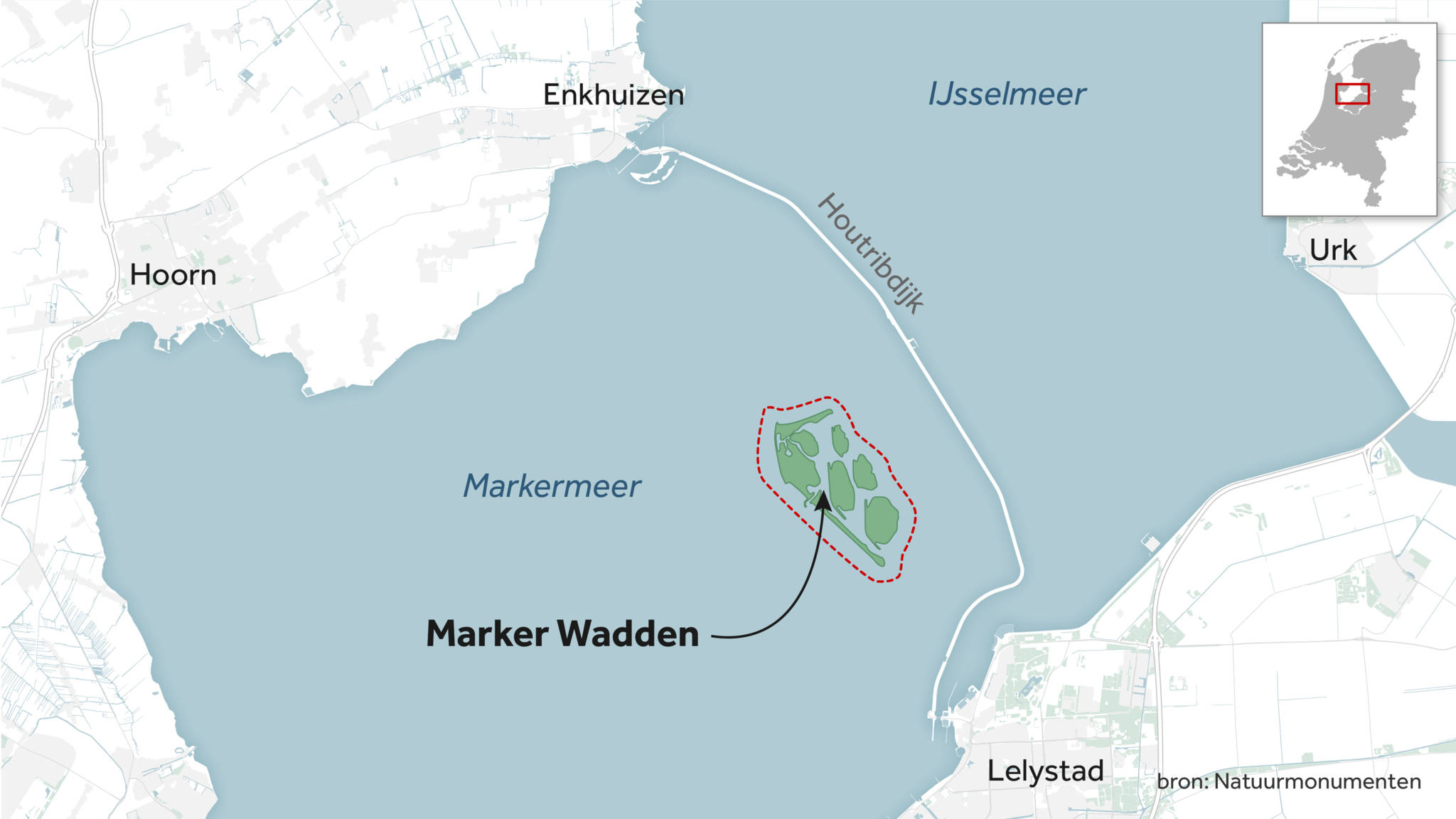
The position of the Marker Wadden in the Markermeer

The Houtribdijk - sperating the Markermeer (left) and the IJsselmeer (right), showing the difference in ecological quality

The original draft of the Marker Wadden
The ripening of the fruits?
The Marker Wadden directly represents a mind shift towards building with and for nature instead of next to or against to. On a deeper, more implicit level, it additionally questions the identity of humankind's relationship with nature: are nature and natural forces still an enemy, or a neighbour to cooperate with?
The Marker Wadden project consists of a 10.000 hectares archipelago of nature-imitated swamp islands in the northeast corner of the Markermeer. The construction of the islands aimed to improve the ecological quality of the Markermeer in two ways (Natuurmonumenten, 2012):
- The artificial nature islands were built with the sludge from the bottom of the lake that was suffocating the ecosystem. Thus, the ecosystem of the lake was able to restore itself.
- The islands built from the sludge attracted a lot of different species which allowed for increased biodiversity.
In 2019, the first research, by van der Winden, showed that many (threatened) bird species were thriving at the Marker Wadden, the presence of different fish species was improving, and swamp vegetation already covered 25% of the islands. As something that stands out from the prior course of modern Dutch history, the Marker Wadden project deserves to be called an icon.
Curatorial Team
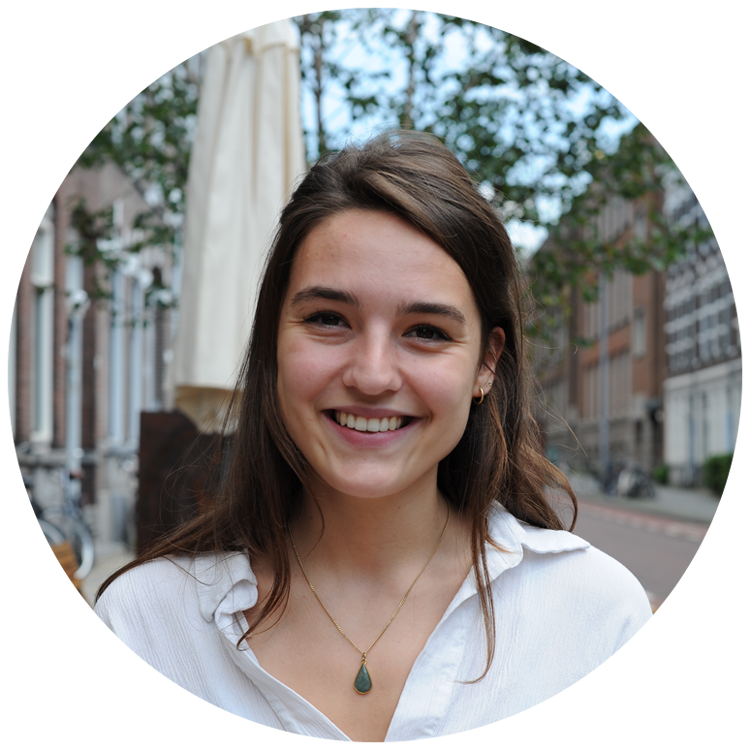
Janthe Buhrs
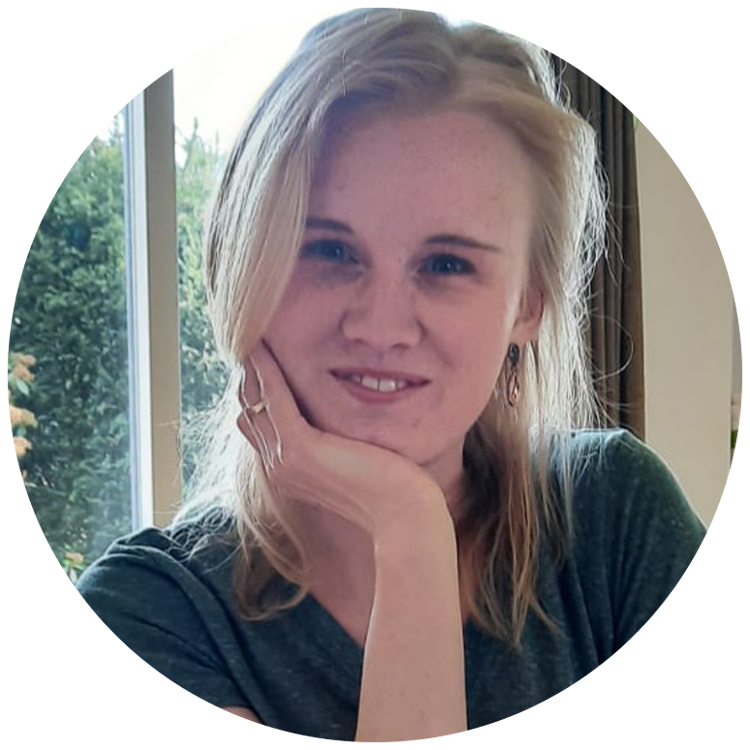
Eva Couperus
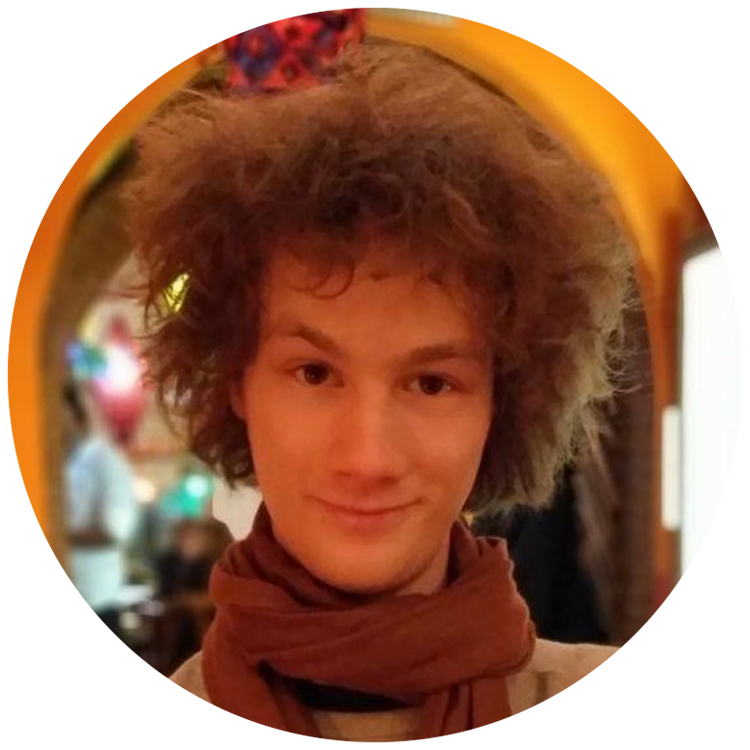
Lukas Schubotz
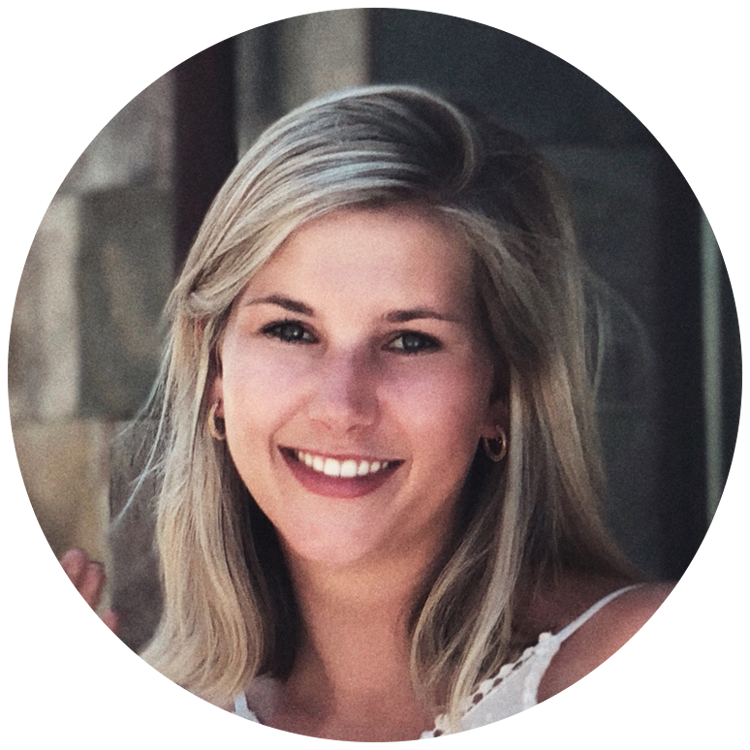
Sijtie Rensen
The Museum for the Future is a project created by the Urban Futures Studio
